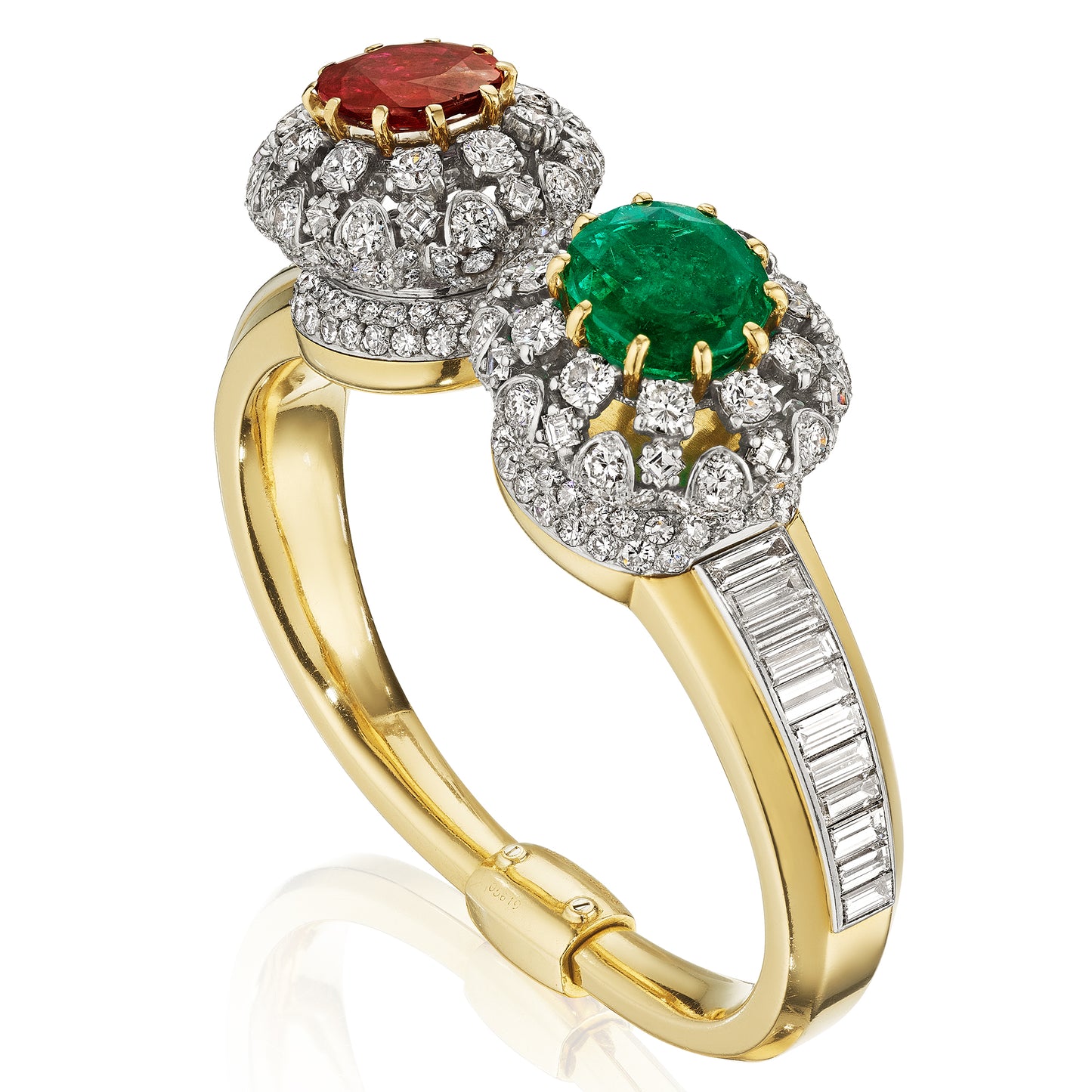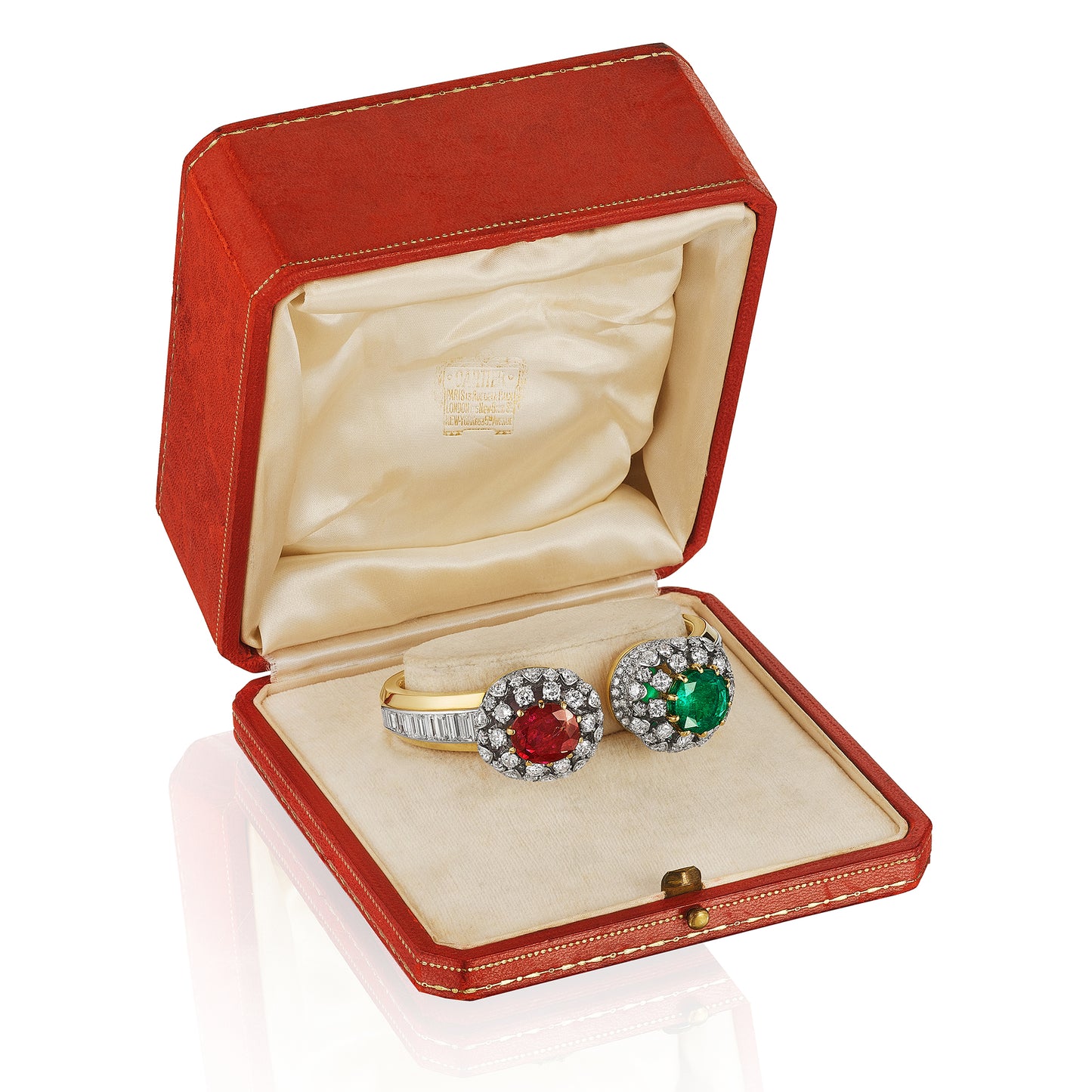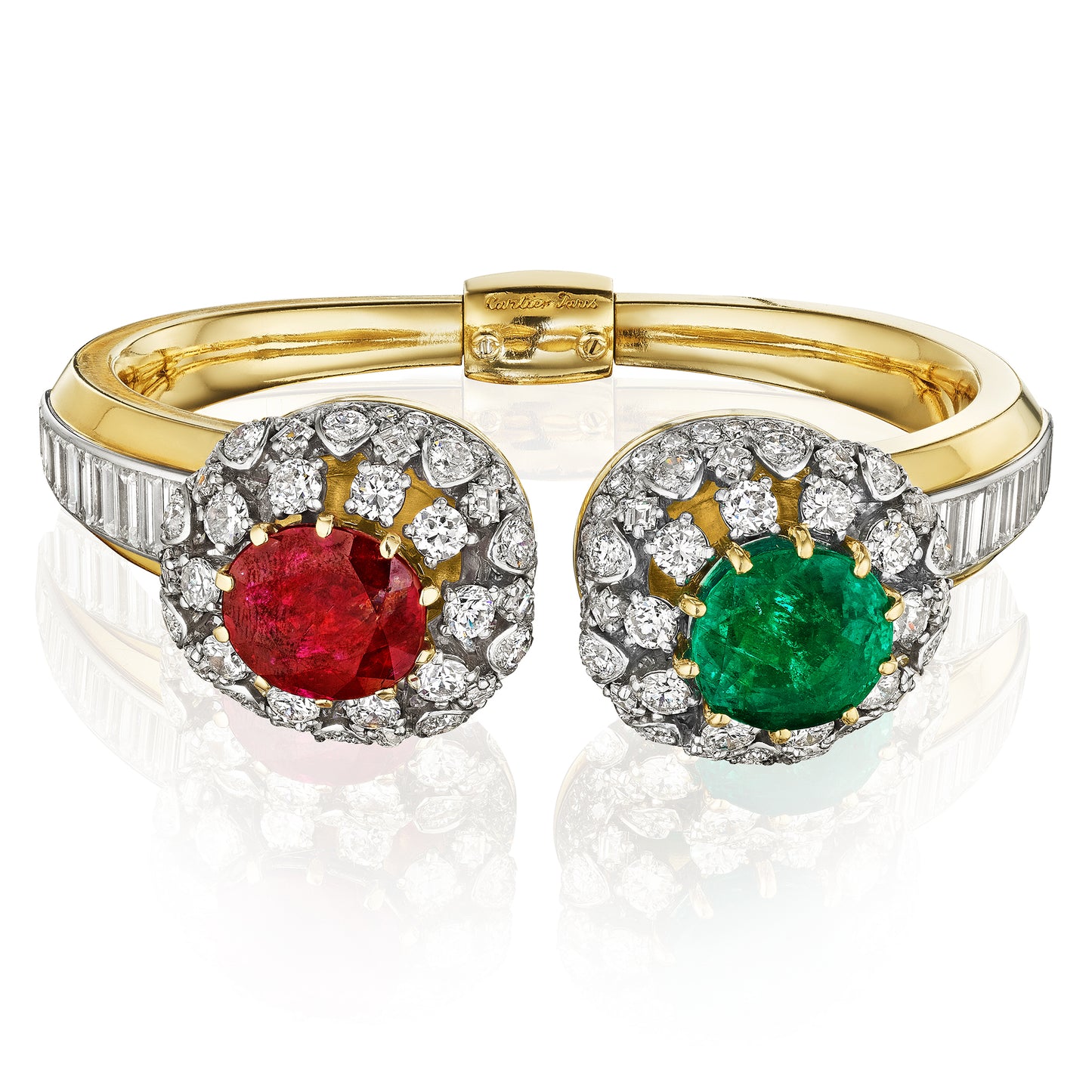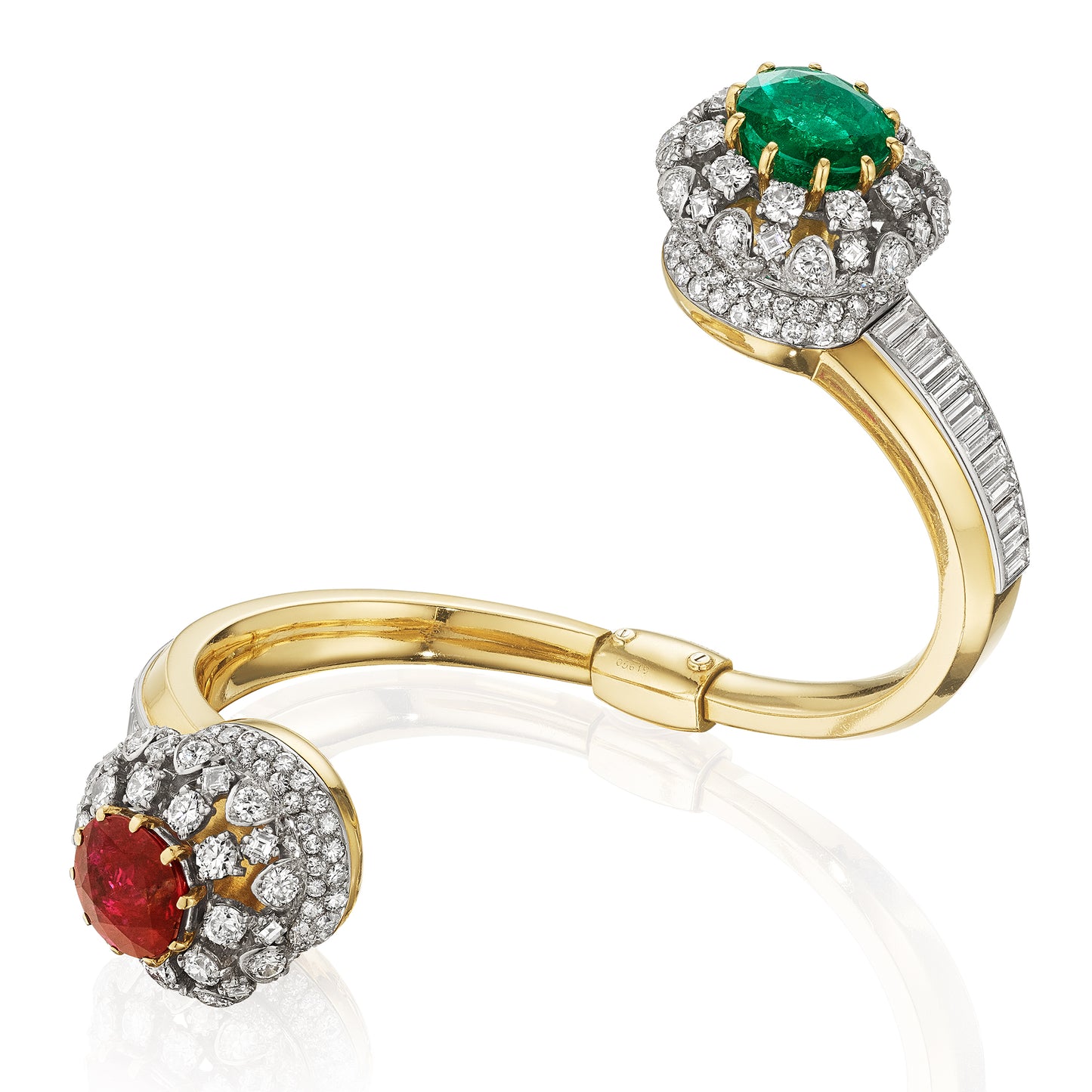RUBY, EMERALD, AND DIAMOND CUFF BRACELET BY CARTIER, PARIS, CIRCA 1943
RUBY, EMERALD, AND DIAMOND CUFF BRACELET BY CARTIER, PARIS, CIRCA 1943
A cuff bracelet composed of two diamond-set terminals of open-work bombe form, one centering a diamond and the other centering a ruby; the sides set with graduated baguette diamonds set into a polished gold cuff; mounted in 18-karat gold and platinum, with French assay marks
- 1 emerald, weighing 10.6 carats
- 1 ruby, weighing 7.14 carats
- Signed Cartier Paris, 05819
- Measurements: 2 5/8 x 2 7/8 inches, Inner circumference: 6 ½ inches
Additional cataloguing
Certification
Swiss Gemmological Institute (SSEF) Gemstone Report no. 99713 dated May 4, 2018, stating that the oval natural beryl emerald has minor oil and is Colombian in origin.
Swiss Gemmological Institute (SSEF) Gemstone Report no. 119006 dated October 15, 2021, stating that the oval natural corundum ruby has no indications of heating and is Burmese in origin.
Biography
Cartier was founded in Paris in 1847 by Louis-François Cartier. His three grandsons, Louis, Pierre, and Jacques, built the house into a famous international jewelry empire serving royalty, Hollywood stars, and socialites. Cartier has created some of the most important jewelry and objects of art of the twentieth century with many iconic designs such as mystery clocks, Tutti Frutti jewelry and the Panthère line. In 1983, The Cartier Collection was established with the objective of acquiring important pieces that trace the firm’s artistic evolution. Today, Cartier has 200 stores in 125 countries.
Significance
In 1933 Jeanne Toussaint took over as director of the luxury jewelry department at Cartier. She moved the company away from the structured geometric jewels of the Art Deco period and into oversized, curved, and sometimes figurative pieces that brought playfulness and color to the dark times of World War II. Toussaint remained deeply connected to the design roots of the company—after all she was the inspiration for the panthère—and looked back to the important design motifs such as the panthère, the chimera, and double terminal bangles that had been important to Cartier in the 1920s.
This double terminal cuff bracelet is an ancient form with roots in many emerging cultures and civilizations from Egypt to Africa, and India. Cartier, under Toussaint, took this form and modernized it with terminals created from oversized crown-like form composed of openwork diamonds of various cuts set in platinum. Each terminal centers a wonderful stone, one a Burmese ruby and the other a Colombian emerald. Setting these playful terminals over gold allows for flashes of gold to show through the negative space, a clever and subtle design move. The designers at Cartier also showed their skill with the smooth opening mechanism that allows the bracelet to twist open so the wrist can slip in and allow a comfortable fit. A similar bracelet was made for the Duchess of Windsor as a first anniversary gift from Edward in 1938.
This exceptional bracelet was created for the customers drawn to strong aesthetic compositions and unusual designs, such as the Duchess of Windsor and Millicent Rogers, style icons who owned this type of piece. It is just as modern and wearable today as when it was first created and would be a rare and treasured addition to any collection.









